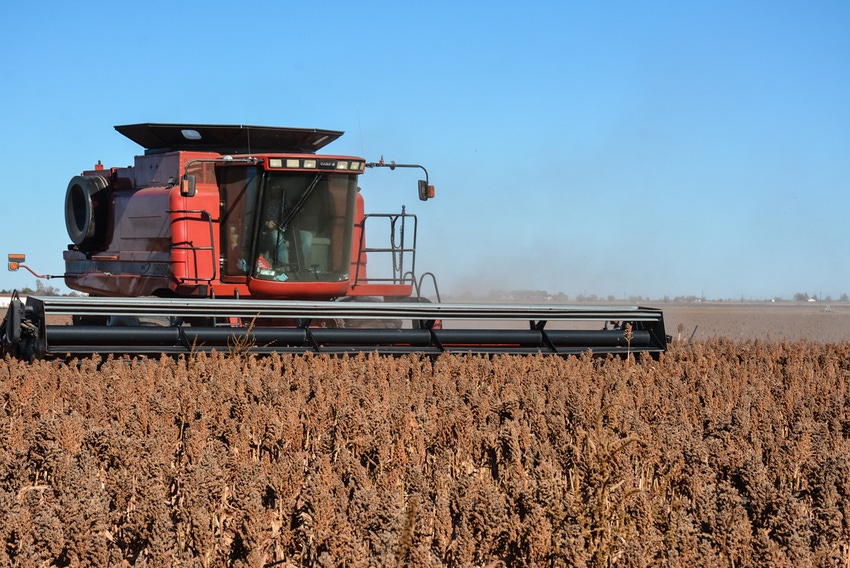December 17, 2018

Since the mid-1980s, the simulation model developed by a Texas A&M AgriLife Research economist has been used to evaluate countless farm bill proposals by Congress to determine both the good and bad financial outcomes for U.S. farmers.
After a 41-year career with the Texas A&M System, Dr. James Richardson, co-director of the Agricultural and Food Policy Center at Texas A&M University in College Station, has decided the time is right to retire, effective Dec. 31.

Richardson’s timing is fitting considering a new $867 million farm bill, which was analyzed using the simulation model, is being prepared to be signed by President Donald Trump.
FLIPSIM, or Farm Level Income Policy Simulator, is the simulation model Richardson first coded in 1980 and has garnered more than $38 million in funding for work by the Agricultural and Food Policy Center at Texas A&M to simulate every farm bill since the mid-1980s for lawmakers, farmers and commodity groups wanting comprehensive policy analysis.
“It takes a proposal, runs through a number of simulations to analyze potential outcomes,” Richardson said. “Through the years, it has proven its worth, and even today it continues to give a broad-stroke analysis of potential peaks and valleys of economic viability for farmers under a variety of policy and trade situations.”
In 1983, Richardson saw a devastating economic downturn in the farm economy ahead.
“The model was indicating a farm economic crisis,” he said. “Several economists across the country said I was wrong. Two years later, we had the worst crisis in modern history.”
FLIPSIM has been used repeatedly to analyze countless draft farm bill proposals by both U.S. House and Senate agriculture committees. The computer model is a far cry from paper calculator worksheets used by farm economists in the late ‘70s and early ‘80s to decide which farm program proposal would be best.
“In 2002, the first year we went to a web-based decision aid, the U.S. Department of Agriculture-Farm Service Agency partnered with us. We had 410,000 farm analyses of base and yield projections,” Richardson said. “That told us that this type of decision aid was in high demand and that farmers were getting some value out of this online tool, which is what the Ag and Food Policy Center is all about, creating value for farmers across the nation.”
The power of the simulation model comes from using data from real farmers. The Policy Center maintains a database for 100 representative farms across the U.S. Farmers meet with Agricultural and Food Policy Center economists throughout the year to discuss their financial operations and provide updated cost and production data for the FLIPSIM database.
“We are now working with the third generation of some of these farmers,” Richardson said. “Some have passed down their operations, retired, or unfortunately, gone broke. We’ve gotten to know farmers and ranchers in all of the states. That’s what makes the Agricultural and Food Policy Center so popular in Washington.”
The center, also known as AFPC, got its start back in the mid-1980s on a Friday afternoon when Dr. Neville Clarke, former director of the Texas A&M Agricultural Experiment Station, requested Richardson and fellow economist Dr. Ron Knutson prepare a proposal for establishing a food and policy center. Their deadline was Monday morning in preparation for a mid-week Texas A&M Board of Regents meeting.
“We worked through the weekend and had it ready by Monday. The center was stamped for approval by the Regents that Wednesday,” Richardson said. “We didn’t waste any time getting things started.”
One of Richardson’s first moves was hiring a young graduate student, Ed Smith, who would rise through the ranks and later become director of the Texas A&M AgriLife Extension Service. Another good hire was a young student, Joe Outlaw, who is now co-director for the Policy Center.
“My expertise is policy and risk analysis, which I merged when I built FLIPSIM. What I needed back then was someone to go visit with farmers and come back with real data and problems. Smith and Knutson served that role, and we never ran out of problems to analyze,” Richardson said.
Through the years, AFPC has had several students who have gone on to have careers with Texas A&M AgriLife economics. Richardson has advised several graduate students, including Outlaw, as well as other College Station-based AgriLife Extension economists including Drs. Luis Ribera, David Anderson and Aleksandre Maisashvili. Rounding out the list is Dr. Stephen Klose, who leads AgriLife Extension’s FARM Assist program in College Station.
Richardson came to Texas A&M in 1978 as an assistant professor. Since that time he has advised 66 graduate students, published more than 150 journal articles and written more than 500 publications. Spanning Richardson’s office wall are more than 21 major awards, including a Regents Professor Service Award and multiple Texas A&M AgriLife Vice Chancellor’s Awards.
“There are two that stand out, but that one right there is the one I think is the most coveted and the one I most admire,” said Outlaw, pointing to the award Richardson was given by the Texas Commodity Symposium. “That tells you right there you are valued by all of the major commodity production groups across the state from corn to cotton, to grain sorghum, wheat and peanuts. That represents so many Texas farmers.”
Richardson said one of the most gratifying aspects of his tenure was showing how technology can be used to help the farmer become more profitable.
“We’ve gone from handheld calculators to web-based decision aids,” he said. “These are state-of-the-art simulation models. That’s what has made the AFPC so valuable to farmers; along with the great people here, the great team, that’s what has made this center so great.”
About the Author(s)
You May Also Like




